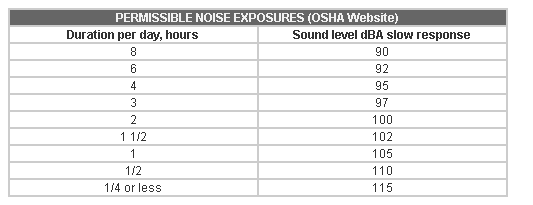By Greg Quirk, Mouser Electronics
Audio. It's hard to imagine a world without sound. It's amazing how much sound enhances our viewing experience. In the U.S. alone, the average home has 2.9 television sets, with 56% owning at least one HD TV – making it the fastest adopted technology over the past two decades. However today, what viewers see on screen often exceeds what they hear. This can be understandable because the majority of audio systems for most consumers is provided directly from the sets.
Audio for portable devices lags even further behind. For handheld devices, the speakers are not significantly large to push enough air to generate enough volume (provide the highs and lows) to make it an enjoyable experience. To help counter this problem, headphones come into play. Most every portable device, whether it's an MP3 player or media player, comes with some form of headphones. But to keep costs down, they are typically not of high quality.
Given the meteoric popularity of portable media devices, including smartphones, tablets, MP3 players, portable DVD players, and many others, the headphone market generated over $700M in 2012. Consider that by 2015 expectations are that there will be over 250 million tablets sold, and over 1.6 billion smartphones globally by 2017. That's a huge market for any add-on device, especially when you take into account that headphones are considered a necessity by most consumers.
Style
There are a number of different aspects to consider when looking for headphones. First is the style – on-ear, over-ear and in-ear. Each has a different purpose, and comfort can vary from person to person. Some chose not to wear in-ear because they constantly fall out. Others do not like on-ear or over-ear because they can put pressure on your head. It all comes down to what is going to work best for your needs and preferences.
Application
Second is the application. The headphones for someone working at a call center or a DJ are going to have very different features and functionality than someone who flies a lot and requires noise cancelation. For industrial jobs, headphones can even be created to meet certification standards, such as the Occupational Safety & Health Administration (OSHA), that combine safety with audio capabilities, such as being able to converse with someone over a microphone. Since 2004, the Bureau of Labor Statistics has reported that more than 125,000 workers have suffered significant, permanent hearing loss. In 2008 alone, BLS reported 22,000 hearing loss cases.
The regulations for hearing safety require that a worker is not exposed to more than a certain decibel level per day for an allotted period of time. The amount of time changes based on the sound level, but for a typical eight hour day the employee should not be exposed to more than 90 decibels without hearing protection.

Via mouser.com.
Quality
Third, you have to consider the audio quality. There are many companies that make audio amplifiers, including Texas Instruments and Maxim. One of the key metrics for headphone amplifiers is the impedance, which start around 10 ohms for low-end headphones and reach 50 ohms or more for professional quality sets.
The signal-to-noise ratio is also important in determining how much volume the headphones can produce. A higher SNR will result in louder volume being generated – unless it's combined with a good frequency range, usually around 30hz – 18khz (although most headphones claim to have at least a 20hz – 20khz range).
The better the quality of the headphones, the higher manufacturing costs due to the quality of the materials and the additional components that are implemented to produce the sound, which is why the free headphones given with an iPod are nothing compared to a $400 (or more) pair of high-quality headphones.
Noise Cancellation
In situations with constant sounds, noise cancellation is a boon. When travelling on an airplane or bus, turning on noise cancellation reduces outside noise by using a microphone to replicate the sound at an inverse frequency. The technology was first thought of in 1978 by Dr. Amar Bose, who came up with the concept while on a flight. Eight years later, noise cancelling headphones were successfully trialed for pilots on around-the-world flights, with the first commercial products being offered in 2000. Since then, noise cancelling technology has been adopted by many manufacturers. Some consumer products, like the Sony Walkman, include noise cancellation in the actual device instead of relying on headphones.
Connectivity
The final consideration is how the sound travels to the headphones. Traditionally a physical cord is connected from the set to the device, but wireless technology improvements have let consumers cut the cord. However, there is a trade off between the convenience of not having physical wires and the power requirements, the complexity of a wireless headset, as well as audio quality loss since the signal must be compressed. Almost all smartphones and tablets, not to mention many MP3 players, have BlueTooth functionality that enables this connection.
While there are other options available, such as RF, infrared, FM, and many others, BlueTooth is the connectivity method of choice. The low power and commoditized cost, combined with a relatively low signal loss over short range to prevent interference, plus two-way transmission make it ideal for most headset applications.
Conclusion
Summing up: Prices for headphones vary drastically, starting from a few dollars for low-end sets to thousands for extremely high-end audiophile headphones. Even if a company can get a fraction of the addressable market for their product (whether it's an actual headset or any component inside), the sheer quantity that the market can purchase along with the tremendous growth that it's experiencing from tablets, smartphones and MP3 players makes it a very interesting prospect.
Advertisement
Learn more about Mouser Electronics





